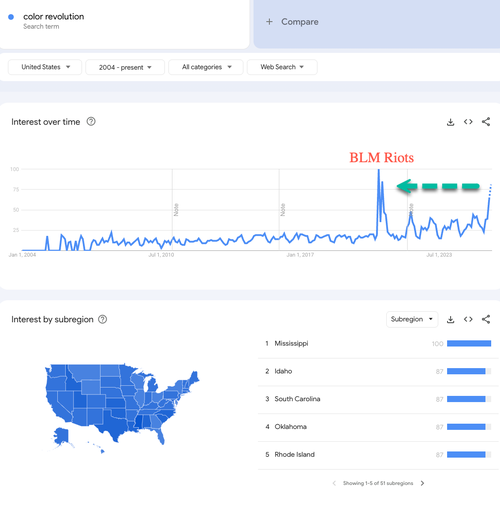How Trudeau Burned Jasper: Parks Canada’s Criminal Negligence |
Ken Hodges, RPF & Emile Begin, RPF
In July of this year, 30% of the town of Jasper, Alberta was destroyed by a wildfire.
And the blame for that can be laid squarely at the feet of Trudeau’s Liberal government.
Parks Canada had years of warning, from forestry management professionals, that the Alberta forests surrounding Jasper were a tinder box, a superfire just waiting to happen. At least one Registered Professional Forester told them that it was not a matter of if, but when.
Hundreds of thousands of hectares of dead forest, killed by pine beetle infestations after proven means of curbing the damage caused by these insects were ignored.
A complete lack of preparedness of forest fire services in the national park that left them unable to respond to the fire in an effective manner. Fire hydrants in Jasper, the threads of which were non-standard, preventing outside firefighting services to assist in saving the town. And the list of willful negligence continues.
Ken Hodges and Emile Begin are Registered Professional Foresters with 90 years of combined experience between them in forestry management.
In this extensive interview, Ken and Emile answer some very direct questions about the mismanagement of this largely preventable disaster. And warn that even now, the government has learned nothing. It will happen again.
Autogenerated Transcript (0:00 - 0:35) In July of this year, 30% of the town of Jasper, Alberta was destroyed by a wildfire, and the blame for that could be laid squarely at the feet of Trudeau's Liberal government. Parks Canada had years of warning from forestry management professionals that the Alberta forests surrounding Jasper were a tinderbox, a superfire just waiting to happen. At least one registered professional forester told them that it was not a matter of if, but when. (0:36 - 1:33) Hundreds of thousands of hectares of dead forest, killed by pine beetle infestations after proven means of curbing the damage caused by these insects, were ignored. A complete lack of preparedness of forest fire services in the National Park that left them unable to respond to the fire in an effective manner. Fire hydrants in Jasper, the threads of which were non-standard, preventing outside firefighting services to assist in saving the town. And the list of willful negligence continues. Ken Hughes and Emile Began are registered professional foresters, with 90 years of combined experience between them in forestry management. In this extensive interview, Ken and Emile answer some very direct questions about the mismanagement of this largely preventable disaster. (1:34 - 2:06) And warn that even now, the government has learned nothing. It will happen again. Ken, Emile, welcome to the show. Thank you very much. Thank you. Now, Ken, you were kind enough to contact me a couple of weeks ago after, on my Friday news report, I talked about the suspicious circumstances surrounding the Jasper fires. (2:07 - 6:32) Evidence that the government badly bungled it, possibly on purpose. And you then contacted me, as you and Emile are fire experts, forestry fire experts, and you've been warning Parks Canada and the government now for years, that this was coming. And you sent me a timeline document that goes all the way back to 1985, when they knew there was a problem. 2004, 2017, as far as I'm, if I'm getting my timeline correct, you started directly warning the government that this wasn't just a matter of if, it was a matter of when. So please catch our viewers up on how you knew this was coming. Well, first of all, we're not fire experts. We are professional foresters with a fair amount of experience. Between the two of us, almost 90 years. We've worked on fires. We've worked on silviculture. We've done, you know, we've done a number of things. Emile's exceptionally good at the beetle component. And how we got involved, we used to, I taught downhill skiing in Jasper at Mermaid Scale for quite a few years. And I kept seeing the beetles grow and grow and wondering what was happening. And then all of a sudden there was a big explosion in a number of red trees that were present. I got concerned. Emile was out there, him and I got talking. We both lived in Prince George at the time. So we ended up kind of thinking about what we can do. Maybe we should let them know exactly what they're up against. We fought beetles in Prince George in British Columbia for many years, probably since 1997 when they exploded due to lack of cold weather, minus 40 for five days. That's what they need to control, the beetle populations. They weren't getting that. So one of the things that we did is we wrote a number of letters, a couple to Minister McKenna at the time. And she finally responded to us. And we certainly had a Sparks Kenna as well, the staff in Jasper. And it came to us very clearly and very quickly that they're surely over their heads in this stuff, in dealing with the beetles. I don't think they could manage the beetles or control the beetles. There was just so much coming out of BC. And then from there we just, they had to know exactly what was coming at them because this was writing on the wall. It wasn't a matter of if it was going to happen, it's a matter of when it was going to happen. So in 2024, July 22nd, they had the megafire. And it wasn't Sue saying or anything else. It was saying the factors that were out in the field, that that is where we do all our work. That told us exactly what was going to happen. It doesn't take a rocket science to do that. I've been on a number of programs and both Emile and I have been in the media. And one of the things they keep saying, we're scientists and we're researchers. We're neither. We're professional foresters who use the knowledge that comes from scientists and researchers to do our job. They are very focused on what they do. We're much more broader. We look across the landscape and we manage it accordingly. So that's kind of where we've been and what we've been doing. And we do care a lot about Jasper because we spend a lot of time there. We feel so badly for the people of Jasper, losing their place when this could have been avoided. Yes. Now, Emil, as Ken says, you're the pine beetle expert. And in this timeline that Ken sent to me, I saw some statistics that I personally found very alarming. 2015, 122 hectares affected. By 2016, we're over 21,000. Then we fast forward to 2018, a million hectares. Now, there's no question that the fires were much, much worse because of all that dry wood that had been killed by the pine beetles. The question, Ken and Emil, is how could this have been prevented? You can't stop a locomotive that... We have 3,500 years of published history as occurring. (6:33 - 8:11) I've worked with people in Kootenay Park and they were able to get mud core samples in lakes to going back 4,000 years that didn't get published. But it did confirm the mountain pine beetle has been in California, British Columbia, Alberta, our national parks for at least 3,500 years, and 4,000 not easily. So, that's information that I learned because I started dealing with a pine beetle in East Kootenay in 1979. I learned about it from my instructor in 1975 at a tech school. He developed this survey methodology. And the pine beetle, the first hint of it, this recent one, started in BC in 1972. We met with parks planners in 1981 when I was in Invermere. They were warned about Waterton. That was 1981, so that was a while back. So, there is a considerable amount of history and knowledge on the pine beetle. And in East Kootenay, that was my job for 25 years from 1979 to 2003 to try and understand, learn, and work with the pine beetle. We did. We used pheromones. We did partial harvesting. We knew what the pine beetle could do, what was coming. It came into the BC Central Plateau. It came into the Rockies, into East Kootenay. It flew from Vernon all the way to Cypress Hill, Saskatchewan. (8:11 - 8:40) And that was through DNA studies that were done independently. It was not my skillset. So, there is a very massive amount of historic research, credible, peer-reviewed, that I've been able to read and experience firsthand in the Rockies and East Kootenay. So, the Parks Canada group were informed. They had information. It was respectfully offered. (8:40 - 9:12) We took the experts' advice from people, some of the experts I worked with. Some of them, they were PhD students. We knew what was coming. So, as we offered, it was a matter of when, not if. It was up to the management in Parks Canada and the ministers at the federal level to deal with it, because Parks is under a different jurisdiction than Alberta. It's kind of a little complicated. (9:13 - 9:37) But, yes, they were aware of it. It's just that, as Ken has often said and observed as I, Parks is pretty good at dealing with people and tourists, but they don't have anybody in forest management. They are trying to balance with ecosystem specialists, caribou, people, and forests, but the people are winning out and everything else is not. (9:38 - 10:08) There's a strategic report that we picked up, discovered here the last couple of weeks from 2020 in Alberta about the Pine Beetle. They knew about it in 1999. It was coming into the east end of Jasper at the gate, East Gate. I hope they paid their pass, but they were in there early. They came from BC, multiple points, Highway 93. They came up over Prince George. (10:08 - 10:35) There's several passes. So, there was a lot of beetle pressure on the parks and that whole area is old pine, which has a whole other history to it. So, I was going through the numbers. You were talking about the expansion. In 2013, they show 123 hectares. In 2019, 229,000 hectares, 230,000 hectares basically. (10:36 - 13:19) So, from 2012 basically, which is when the trees would have been attacked, to 2019, the beetles grew from 123 hectares a year, 6,000 hectares a year, 15,000 hectares a year, 27,000, 44,000. When I got into the intramural, we were dealing with 21,000 and with weather and the biology, we were able to work with nature and drop it down to 1,000 hectares a year. When our office was closed in 2003, it only took six years for that 1,000 hectares to go over 40,000 hectares. So, we had a pretty good knowledge base on what the pine beetle was doing. And I'll get it back to you and Ken because I spent way too much time understanding and learning about the beetles and I could dive into it with a great deal of depth. All right. Now, Ken, I am going to come back to you because Amelia, you have given us an education here, not just a background, but an education. It's been debated among whether or not these pine beetles have always been here or they came in from somewhere else. But as you pointed out in one of your documents, pine beetles can cover up to a hundred kilometers flying under proper conditions, which says to me, and you also pointed out, we've got mud samples from 4,000 years ago show that there were pine beetles here then. Whether they were here in the 70s or not, doesn't matter because the amount of ground that can cover showing up sooner or later was inevitable. And they have been here before. But as far as we can see, historically, they have not caused this kind of massive forest fire damage. And so the question I have for Ken and for you, Amelia, if you want to weigh in on it, have we not caused this problem ourselves by putting out the naturally occurring fires that normally would have controlled these populations? You're absolutely right on as well. Parks Canada has admitted to it in their documents of 70 years of battling fires. And there for a while, all they had was maximum two hectares and they're pretty proud of that. And they did a really good job in firefighting, but they missed the overall perspective of what was going to happen by doing that. The fires provide a dynamic across the landscape, resulting in old mature trees that end up dying, falling down, creating a huge fuel load. And that result creates an opportunity for mountain pine beetle to come into play. (13:20 - 21:50) And that in itself really kind of drives what is happening. Beetles fly, they came from BC, you don't get the winter kill. And again, when that happens, they just explode. And Amelia will give you a bit of a history on some of that stuff and an education of it. And the age of these trees is probably 130, 140 years. And pine culminates at 80 to 100 years. And here we're way beyond that since the last fire in the late 1800s, early 1900s. So you kind of look at that aspect and you've got a real explosive situation for beetles. And then once that happens, you have an explosive situation for a massive fire, which occurred. It's unfortunate that they were not able to manage the beetles to control them. There's no way they could do that. They could manage them to a point, but there are so many and so much reproduction of these beetles. It just resulted in a massive sea of dead trees throughout the landscape. And when you have that, you have conditions weather-wise, which you cannot control, but you can manage the fuel. And they did not want to do that. So there's all sorts of implications around not managing the fuel. And one of them showed up this past summer. Yes. And in regards to not managing the fuel, you sent me a number of photographs, aerial photographs of the forest. And there's massive swaths of red trees, which of course are characteristic of having been killed by pine beetles. Emil, your opinion on the fact that we caused this? Ken covered it nicely. In 2016, Parks Canada did a mountain pine beetle management plan report, page seven, second paragraph from the bottom. They offered that 70 years of fire prevention management, putting fires out, contributed to making a massive area of food for the pine beetle. So they've admitted in that 2016 report that their management actions, putting out fires, has contributed to that beetle. They're bound by UNESCO. Our national parks are World Heritage sites, and they're under UNESCO, United Nations management to some degree. It's a federal obligation, not a provincial one in the national parks. Their methods is to maintain ecological integrity. But I think they lost the point of the dynamic nature of forests and beetles, and they missed that completely from what I can see. And there's now at least 230,000 hectares of dead pine based on Parks Canada's numbers, and we're not sure about them. Not certain because Parks Canada hasn't released a lot of that information. And they've said that they're not going to be releasing a lot of FOI information until May of 2025. So the photos that I think Ken sent you are the ones, aerial shots that were made available from various hikes into the hills that Ken and I both did, and from a sky cam on the 360 camera. And that was from 2018. We could see and estimate that the pine beetle impact was being underestimated in 2017-2018. We could see that. That's why we kind of stepped up because it was obvious from our perspectives. But so 40,000 hectares burned up roughly. We still get 170,000, 180,000 hectares of dead pine beetle killed forests. And if that fire comes in from the west this time, prevailing winds, so it was around 24 kilometers from the Jasper Park gate to the town, they're going to lose that west side. The fire that came up from the south came up faster than they ever thought was possible. We learned that the hard way in Kelowna and fires in there, and as Ken has pointed out in the past, there's a magic formula, 30-30-30. And I'll let Ken explain that. But the part with BC used to have a five class fire hazard rating and five being the highest for fires. We had to make a sixth rating because pine beetle fires surprised everybody. Huge, massive fire. So yeah, the parks has known. 2016 is when they said that they were going to work on it more. They've known since 1999. But their graphs that they've sent us, that we've been able to find, show that by 2016, the pine beetle was increasing at around 40,000 hectares a year. You can't control that and you can manage it to some degree, but good luck with the battle of the beetles and fighting it. You can't beat nature. And just before we move back to Ken, I just want to confirm, 2017, they knew. You and Ken warned them. The mayor of Jasper warned them. Well, we warned the mayor of Jasper as well and he was kind enough to ask a question. What do two foresters from BC think you have to offer? You don't even live in Jasper. We have our experts. Thank you, but we've already got this. The point is they knew seven years ago with two forestry management experts warning them, people with 90 years of experience between you who has seen this happen before, and you warned them. There is a powder keg sitting here waiting to go off and they did essentially nothing as far as I can see from the timeline I was sent. That's what I see as well. And well, Ken can go into that as well. And we both saw that, but everything that we shared with them was shared with the depth of experience that we have, the concerns. And that's part of the reason why we got into forestry, not to be experts, but to be able to work in the forest and to learn with the patience of many experts and mentors to help us understand. And we saw it ourself because we lived pretty much every day. Like 25 years in Invermere, I was out in the forest. I have a 20 day month. I was in the office four days, 16 days out in the field at all temperatures. And we'd learned a lot with a lot of really good people from US Forest Service as well. So the information that we shared was honestly, respectfully and passionately shared. And yeah, their choice to win or lose, I think they made the wrong choice. Yes. Now, Ken, Emile made reference to this 30, 30, 30 rule. What is that? What it is, Will, or is it my mute? 30, 30 is, it relates to the weather out there. So you got 30% humidity or less during the fire season there of 2022 or 24, the immunity was around 12%. Temperatures greater than 30 degrees Celsius and the temperatures for two weeks in Jasper was over 30 degrees. And the third one is the 30 kilometers an hour of wind. And that doesn't have to be sustained. But during the fire, before the fire, they were getting 30 to 50 kilometer an hour winds. You have those three factors of weather, which you cannot control. And now you throw the fuel that exists across the man base. So you have those factors. All you need is a match or ignition system. (21:51 - 22:03) And the ignition at that time was a lightning strike. That's what we've read and heard. And once that happens, in those conditions, the winds pick up, the fire creates its own winds. (22:03 - 22:41) They were getting winds of 150 kilometers an hour. That was because of what the fire was doing. The intensity of the fire as a result of all the dead pine beetles, the low humidity, the high temperatures, and now the winds, it was a class six fire. As Emile pointed out in BC, when we worked there initially, they had five classes of fuel intensity. And they created that sixth class simply because of the mountain pine beetles. And I had not been on a, I've seen the but I've not fought a beetle fire, but I did talk to a number of people who I knew quite well. (22:42 - 23:50) They said they'd never seen fire behavior like that in their careers. And it did create exactly what was predicted because of the experience we had, because of the knowledge we shared and knowledge that was provided to us by those people who were focused in on that specific field of expertise of fighting fire. So we've got low humidity, high temperature, high winds, the formula for a perfect storm, perfect fire storm. And the official story is that it was started by a lightning strike. We'll get back to that later as there might be another explanation, but we'll go with that one for now. Now, once again, if I'm reading this timeline correctly that you sent to me, July 19th, five days before Jasper burned, it was just three small fires, which they said they were managing. And yet they also said they had other teams on standby. Why? Why would they do that when there are fires clearly threatening the town under the perfect conditions that you laid out, Ken? Why in the world would they have had people sitting on standby when they could have been in there putting those fires out?











